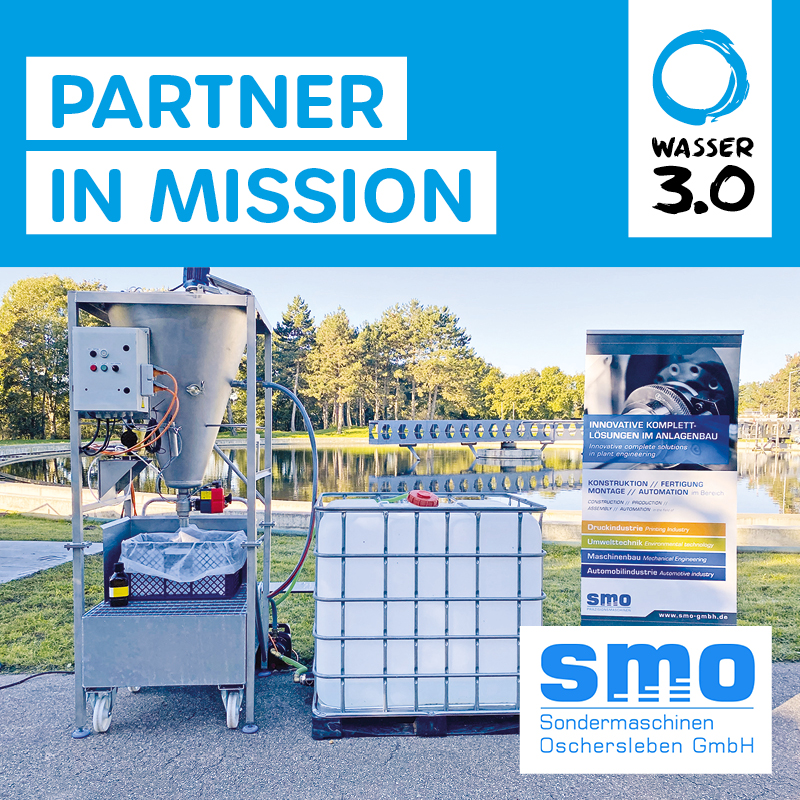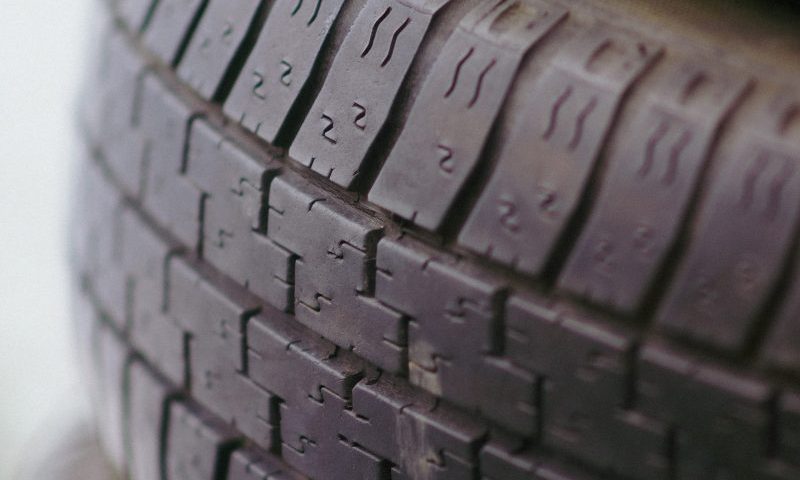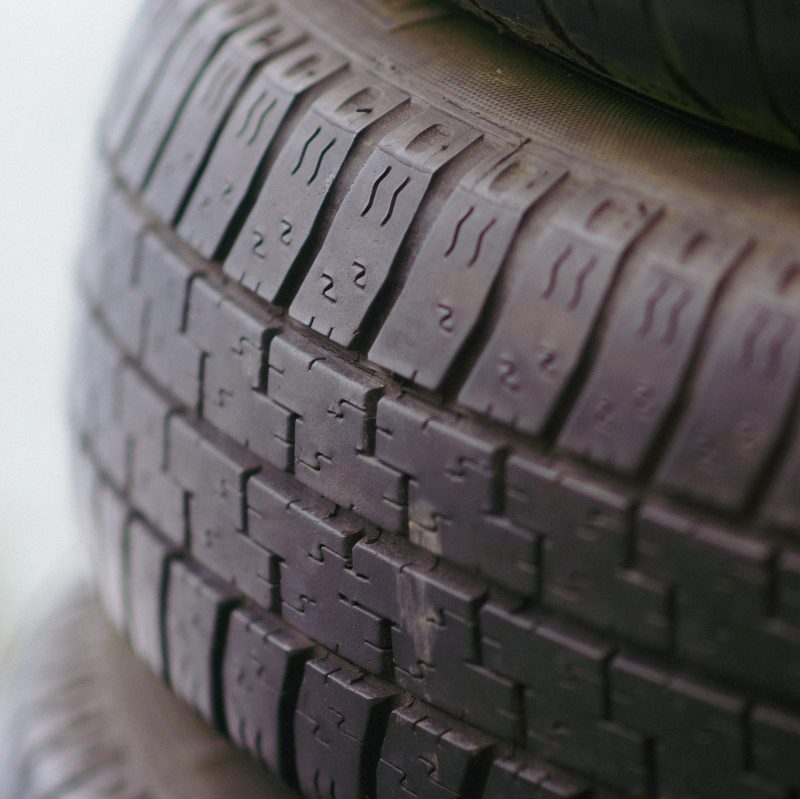
Partner in Mission: Carl Roth GmbH + CO. KG
4. April 2023
Partner in Mission: Sondermaschinen Oschersleben
21. April 2023Is tire wear one of the main sources of microplastics in the environment?
Tire wear particles (TWPs) are a main source of direct microplastic entry into the environment. Currently, no standardized analytical method for tire wear particles exist; only rough estimations can be made about the amount of microplastics emitted.
However, it is estimated that TWPs are responsible for 30% of the total microplastic emissions in Germany. The friction between tires and the road surface result in their emission, with large particles being transported by road runoff into surface waters, whereas smaller particles may also be subject to atmospheric (airborne) transport.
Various factors, such as vehicle weight, driving techniques, tire pressure, and tire design, all influence the abrasion rate of the tire and thus the amount of microplastics emitted.
What are tire wear particles?
The average passenger car tire contains up to 25 compounds and up to 12 different rubber compounds. This includes both natural and synthetic rubber, plasticizers, oils, metals, carbon black, and other compounds. Synthetic rubber makes up around 60% of the rubber used in tires.
While driving, accelerating, and braking, friction between tires and the road surface leads to emission of tire wear particles (TWP). But as the tire comes into contact with the road, the heat and friction alters its chemical and structural composition, by evaporating volatile substances and incorporating road building materials and other dusts as they roll over the road surface, like a rolling snow ball.
Thus, real-world TWPs are a heterogenous mix of rubber-mineral articles and fine dust from other traffic-related particles, such as from brake wear and resuspension of wear particles, referred to as tire and road wear particles (TRPWs). This mix is a combined pollutant and has been found to consist primarily of 50-90% rubber content and 10-50% road surface particles that cannot be separated. TWRPs are generally 0.01 to 0.2 mm and tend to have an elongated, cylindrical particle shape.
Recent studies have also investigated the chemical composition of tire treads and detected hundreds of chemicals, the majority of which are not known. These are assumed to be transformation products resulting from the production or use phase of tires.
Due to their direct entry into the environment, TRWPs are considered a type B microplastic. Their properties and behaviour in the environment vary according to the mass concentration, particle characteristics (components of the tire tread, particle diameter and density), and also on the generation process.
What factors have an impact on the release of tire and road wear particles?
The amount of TRWPs released varies depending on multiple factors, including:
- Climate (e.g. temperature, humidity)
- Tire structure and design (e.g. size, tread depth, tire pressure, chemical composition, accumulated mileage)
- Road surface (e.g. binders such as bitumen, porosity, condition, road surface wetness, surface texture, aggregate rocks)
- Vehicle characteristics (e.g. weight, distribution of load, wheel alignment, suspension, engine power)
- Driving style (e.g., speed, acceleration, cornering or braking frequency and extent).
It is thus assumed that electric vehicles, due to their higher mass, emit more microplastic (TRWP) particles from their tires.
Some road surfaces, particularly in areas with high traffic density contain polymer-modified bitumen (PMB). PMB is used to increase the road’s resistance to cracking and deformation, and is common in countries such as Australia, China, Denmark, Norway, Russia, Sweden, Norway, and the United Kingdom. PMB further influences the release of road abrasion particles and the total release of rubber particles. Additional factors include the ratio of personal to heavy vehicles, and the use of studded tires.
Why are they an issue?
An average car tire loses about 10-30% of the tread, equating to approximately 1.5 kg in mass assuming a lifetime of 20,000-50,000 km. These millions of tire wear particles are released into various environmental compartments via different pathways. Most coarse particles tend to be deposited in soils on the roadside. Smaller, finer particles are typically transported by rain and road runoff into stormwater systems, surface waters (where they may leach toxic chemicals into the environment) or may become airborne and undergo atmospheric transport. TRWPs are considered as a main contribution to the amount of particulate matter (PM) in ambient air.
One study found an average of 372 ± 50 tire fragments per kg of dry weight in soil samples alongside a road with heavy traffic, while road dust samples had 515 ± 20 per kg of dry weight. It has also been found that 30 vol. % of the microplastics found in rivers, lakes, and oceans consist of tire wear.
Once dispersed in the environment, these particles may have significant detrimental health and environmental impacts on both a local and global scale.
How can they be detected and removed?
Due to missing measurement data, the actual amount of TRWPs emitted is unknown. only rough estimations can be made. Often the annual emissions are estimated based on emission factors such as the mass of generated tire wear per vehicle per km and an estimated annual mileage, or based on the consumption of tires and their estimated annual weight loss due to abrasion.
The ability to detect TRWPs in environmental samples is challenging as the chemical composition is highly complex and varies strongly among different tires. his also makes it difficult to develop markers for a reliable quantification in mass spectrometry, while standard spectroscopic techniques used in microplastic research, such as Raman microscopy, have often been challenging due to the characteristics of the black particles. And although several different analytical methods have been used to quantify TWP in the environment, various challenges to develop a robust methodology remain, and no standardized approach has yet been determined. Therefore, results from different studies are not comparable and implementation of regulations is delayed.
Further studies on the impact of road characteristics (e.g. pavement binders and aggregates, road geometry, surface roughness, climate conditions, etc), abrasion rates of different road pavements, and pathways of TRWPs into the environment (e.g. drainage infrastructure, storm water pipes, WWTPs, etc.) should be investigated. Understanding such pathways is important to understand hot spots of TRWP pollution and thus determine the appropriate mitigation measures.
Moving forwards towards an overall reduction of tire abrasion particles
On May 1st, 2021, the EU tire labelling regulation came into force. It addressed tire abrasion as a significant source of microplastics and the “European Strategy for Plastics in a Circular Economy” highlights the necessity to tackle the unintentional release of microplastics from tires. It also recognizes that microplastics are harmful to both environmental and human health. As such, a labeling requirement for tire abrasion rates and a minimum requirement for tires was set to be implemented. But due to the lack of a suitable testing method for measuring tire abrasion and mileage, no regulations were put in place.
A standardized and effective testing method is thus critical for finally implementing impactful standards and regulations that will require industry to address tire design.
But implementing regulations on tire abrasion labeling alone is not sufficient. More data on the impact of tire and road surface design on the release of TRWPs is required to understand where mitigative measures can be most effective. And a more holistic approach that includes innovative technologies alongside education and societal behaviour, and an understanding of the broader impacts of e.g. incorporating more natural rubber in tires is needed, as this may result in deforestation of critical and sensitive ecosystems.
Thus, in addition to tire and road surface design, other ways to effectively reduce TRWPs include:
- Reducing overall driving mileage.
- Opting to walk, take public transit, or cycle.
- Consider driving behaviour.
- Reducing speed, braking, acceleration.
- Opting to drive smaller vehicles.
Knowledge transfer and communication should be facilitated, to determine the most appropriate and sustainable solutions, stakeholder actions, and policies moving forwards.
How Wasser 3.0 is working to tackle the issue
Without data – we are only people with an opinion. Therefore, a standardized analytical method for the detection and monitoring of TRWPs is necessary, along with further research on their mass flows in the environment and impacts of different parameters on their rate of emission.
Wasser 3.0 is currently researching and working on the development of a new fluorescent dye to mark and detect tire wear particles in the environment. This is a crucial step towards the implementation and development of impactful regulations and standards to prevent unintentional microplastic release.
Approximately 31% of TRWPs enter stormwater systems, and thus wastewater treatment plants, where their removal must also be targeted. This requires sound knowledge on the efficiency of different removal techniques; we are developing methods to remove tire wear from waters and prevent emissions from road runoff.
A holistic approach that considers all aspects, such as standardized monitoring and detection for reliable and comparable results on TRWP emissions and mass flows, impacts of tire and road design, removal efficiencies, implications of policy instruments and regulations, and knowledge sharing and transparent communication, must be taken to effectively reduce the unintentional release of microplastics into the environment. We are looking for project partners to join us as we pursue transparent research on TRWP detection and innovative technologies to tackle their release.
And what is the answer to the title question: Is microplastic from tire wear one of the main sources of microplastic in the environment?
The answer in a nutshell: we don't know (yet). But you can support us in collecting data with donations and sponsorship. Every euro goes directly to our research and data transparency. Join us and become part of the solution.








